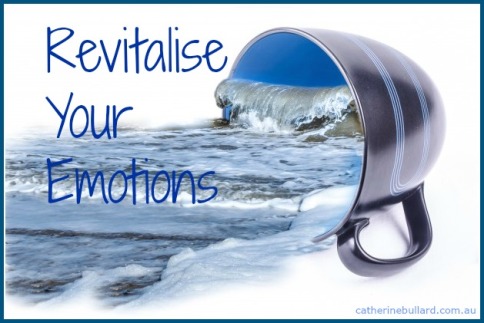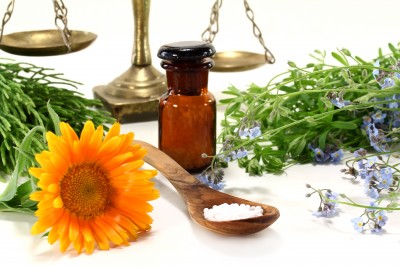Do you feel burned out, run down, and exhausted? That’s no way to enter a New Year! 2015 has been a tough year for many, many people and it’s important to regroup and recharge as we roll on towards the year-end. Because I want to help you stay ahead of your game I’ve put together this list of ways to rebalance and revitalise body, mind and soul so you can be your renewed best, ready for any challenges the New Year throws at you.

Revitalising yourself has much to do with releasing what no longer serves you and many of these practices involve letting go of the old. With the year drawing to a close it’s the perfect way to say goodbye to the old and make space for all the future holds for you.
REVITALISE YOUR MIND
1. Know Your Limits And Set Boundaries
Whether you’re someone who’s driven by a burning passion or like me, fired by curiosity always jumping to the next intrigue, you need to set your boundaries. Establishing boundaries isn’t about limitation. It’s not only to ensure your adrenal glands don’t give up from over-stress, and it’s not about conserving physical energy. Rather it’s about giving you the space and energy to spend more time pursuing those parts of your life that give you joy. When you have strong boundaries you can keep right away from others dramas.
2. Forgive, Forgive, Forgive
This is so important. Perhaps the most important step you need to take to revitalize your  mind as well as your soul is to let go. If you’ve been hurt by someone in the past and are still carrying that heavy, painful, angry burden it’s now time to release it. Even if they’re not aware they hurt you it’s time to forgive. It’s not about negating what happened, but about you releasing the weight and the toxic, destructive impact anger and resentment have on your body and your soul.
mind as well as your soul is to let go. If you’ve been hurt by someone in the past and are still carrying that heavy, painful, angry burden it’s now time to release it. Even if they’re not aware they hurt you it’s time to forgive. It’s not about negating what happened, but about you releasing the weight and the toxic, destructive impact anger and resentment have on your body and your soul.
3. Meditate
There’s absolutely no question about the benefits of meditating – studies just keep underscoring the many ways it benefits your health and wellbeing. Whether you snatch five minutes in the morning, adopt mindfulness through the day or join a meditation class, it’s simply a matter of finding the form that’s right for you and then sticking to it.
4. Build Better Relationships
It’s vital to get out of toxic relationships as they cloud your life with negativity. If you feel it’s too drastic to release them completely start small and schedule a day or a weekend free from all the negative people who drain you – even if you love them. Include anyone who’s quick to criticize or totally self-absorbed.
5. Get Creative
When you’re completely absorbed expressing yourself creatively just for fun, whether it’s singing, painting, sewing, gardening or whatever, it’s really difficult NOT to relax and stop stressing
6. Expand Your Experience
Challenge yourself by setting a date with  just you to do something outside your comfort zone. Spend time alone discovering your capabilities. Find something that challenges you like hot air ballooning, scuba diving, attending a gallery, or even public speaking. When you challenge yourself you discover how capable you are. You may even find a new interest.
just you to do something outside your comfort zone. Spend time alone discovering your capabilities. Find something that challenges you like hot air ballooning, scuba diving, attending a gallery, or even public speaking. When you challenge yourself you discover how capable you are. You may even find a new interest.
7. De-clutter Your Space To De-clutter Your Mind
Clean out the old and make way for the new. And that applies whether it’s material possessions, outdated attitudes or even people. The amazing thing is that when you start to de-clutter on any one level it flows through into all levels of you, the physical, emotional and spiritual. After you clear out the living room you’ll find your thoughts shifting and you may even look at the people in your life with new clearer vision.
REVITALISE YOUR EMOTIONS
8. Give Back
Volunteer – your time, your knowledge or your support. Volunteer at a food truck, a shelter, or anywhere you are reminded of all the blessings you have in your life.
9. Be Present
Set aside some time each day for a thought diet. Limit your thoughts to the here and now, focusing only on the present. Forget the past and let the future unfold in it’s own time.
10. Count Your Successes
We can be quick to criticize our failings but often completely overlook our successes. Give yourself permission to feel proud of ALL your achievements, no matter how small.
11. Cry And Release
If you need to let it all out!  Run a warm deep bath, add some Epsom salts and essential oils and soak. Cry out all the burdens of the last twelve months. Let it all flow until you feel relaxed, lighter and more positive. Emotional crying releases toxins that are byproducts of stress so your body will be cleaner and lighter too.
Run a warm deep bath, add some Epsom salts and essential oils and soak. Cry out all the burdens of the last twelve months. Let it all flow until you feel relaxed, lighter and more positive. Emotional crying releases toxins that are byproducts of stress so your body will be cleaner and lighter too.
12. Create a Worry Time Window
If you’re someone who worries chances are it keeps you awake at night and stops you enjoying life to the full. Setting aside ten to thirty minutes each morning or night for just “worrying” frees you up for the rest of the day. When you find yourself starting to worry outside this time put the thought aside to revisit at the designated “worry window” time.
13. Be Honest
Lying to others doesn’t honour them or you. Allow yourself the gift of honest thoughts and communication with others. Having to keep up a lie is a heavy burden to carry.
14. Special “Me-Time” Alone
Time spent with just you is pure gold. Learning to say “no” to others and making space for yourself in your busy life provides an opportunity to heal and revitalize. It not only helps you connect with your inner wisdom more deeply, it also recharges you. Make time for yourself.
REVITALISE YOUR BODY
15. Get Outside and Ground Yourself
Go outside, take off your shoes and sit or stand on the earth, the grass or in the water to ground yourself. Just being in nature lifts your spirits. Our modern environment has a toxic effect on your body and directly connecting your body to the earth through your feet creates a chemical reaction within your cells that helps rebalance you. Focus on being present and breathe deeply to oxygenate your blood and fire up your brain cells.
16. Simple New Year Detox
Instead of vaguely vowing on January 1st to “lose weight”, “eat healthy” or “exercise more”, do a mini detox to help you quickly recover from too many festivities. Set aside a day, weekend, even a week to take a break from alcohol, processed foods and sugar. Plan ahead. Get in fresh fruit and veges, wholefoods or minimally processed foods, or even go totally organic. Drink lots of pure water to flush out the ‘nasties’. Add warm lemon water in the morning. Do whatever you can manage. You’ll feel clearer with more energy.
17. Reset Your Sleep Clock
Adults need 7 to 8 hours sleep every night. Having a sleep-in on the weekend doesn’t balance your sleep bank. When you’re chronically sleep deprived your brain stops getting the ‘tired’ messages so you’re not even aware any longer that you need sleep. If you’re not getting at least 7 hours sleep a night your brain needs retraining.
18. Get Physical
Research shows we need physical exercise every day. It could be weights, running or a gym workout. Or instead you could do gardening, walking, swimming, tai chi, rope skipping or any other activity you enjoy. I have a really, really long hallway and I love reading. So when the weather’s foul I walk briskly up and down the hall for 30 minutes, reading all the way. Just get active!
19. Love The Sun
Make a daily date with the sun. Not only does it brighten your outlook it also provides you with vitamin D. It’s the only natural source of this essential building block which is required for hundreds of functions in your body.
20. Drink Up
Carry a bottle of water with you and sip through the day. You’ll be surprised at how much you manage to drink. Surprisingly when you’re chronically dehydrated your brain mixes up the messages it gets from your cells and tells you “you’re hungry, go eat” instead of “go drink”. Also too many substitute coffee, tea or soft drinks for water, which act as diuretics and deplete your body of moisture.
21. Eat A Rainbow
Who doesn’t love a rainbow?  The colour of fruit and vegetables tells you what it contains. It’s not enough to have one or two, you need the full range. So aim for five or more different colours on your plate to get a broader range of antioxidants.
The colour of fruit and vegetables tells you what it contains. It’s not enough to have one or two, you need the full range. So aim for five or more different colours on your plate to get a broader range of antioxidants.
REVITALISE YOUR SOUL
22. Practice Gratitude
Remind yourself of just how fortunate you are and of all the bounty in your life. Keep a Gratitude Journal to record three things you are thankful for each day, no matter how small.
23. Evict Your Inner Critic
We’ve all got one, that voice inside our head that’s so quick to point out all the holes in our  plans, to warn us we don’t have what it takes to succeed and to remind us of our past mistakes and failures. I used to call mine “The Committee” because sometimes it felt like a whole group ganged up together to completely overpower me. But you can evict them. If you’re a gentle person bribe that inner critic outside your head, or explain nicely that you’re the boss and have the final word. If you’re a bit blunter you could do as I did. Whenever that “Committee” started criticising I’d jump in with “sit down and shut up” before they could get going. It’s amazing how quickly you can silence the critic simply by deciding that YOU’RE the one in the driver seat who makes all the final decisions.
plans, to warn us we don’t have what it takes to succeed and to remind us of our past mistakes and failures. I used to call mine “The Committee” because sometimes it felt like a whole group ganged up together to completely overpower me. But you can evict them. If you’re a gentle person bribe that inner critic outside your head, or explain nicely that you’re the boss and have the final word. If you’re a bit blunter you could do as I did. Whenever that “Committee” started criticising I’d jump in with “sit down and shut up” before they could get going. It’s amazing how quickly you can silence the critic simply by deciding that YOU’RE the one in the driver seat who makes all the final decisions.
24. Release Guilt
Guilt is simply homework from your Inner Critic. When you reclaim control from the critic you don’t have to carry the guilt either. Write down what you feel guilty about, the whole story if you want, and finish it with “I forgive you” (that part’s really important). Next read it out loud. Lastly burn the paper. The three steps of this small ritual each plays an important role. By writing you crystallize the issue, including your forgiveness of yourself. Speaking the words out loud empowers them. Burning the paper symbolically releases your guilt.
25. Listen With Your Whole Self
Open yourself to someone trying to tell you something, and listen without any judgement and without giving advice. Don’t relate what they say to your own experiences. In fact just listen, nothing more – unless they ask for your thoughts. Listening without engaging your inner critic or your life story is one of the greatest gifts you can give and nourishes your soul.
26. Give, And Wish For Nothing In Return
Cultivate generosity. Giving enriches somebody else’s life. Giving without expecting anything in return also equals deposits in your happiness bank. Passing it forward is one simple way to give. Check The Wake Up Project for mindful living tips, uplifting kindness stories and free kindness cards.
27. Gain Clarity By Connecting With Inner Wisdom
Taking time to meditate or pray  or any practice that connects with your inner wisdom and develops your spirituality is an investment in defining your purpose and passion. Your inner wisdom is like the GPS for your life and provides you with guidance and clarity about who you are and your life path.
or any practice that connects with your inner wisdom and develops your spirituality is an investment in defining your purpose and passion. Your inner wisdom is like the GPS for your life and provides you with guidance and clarity about who you are and your life path.
28. Ditch “Rule” Words
Words like should, must, don’t or can’t are all ‘rule words’ that indicate somebody else’s expectation of you. Ditch rules set by others that contain any of these or similar words. When you set new standards that honour your needs and rights you reinforce your personal boundaries.
What other methods do you use to recharge and revitalise yourself?
Disclaimer
All information and opinions presented here are for information purposes only and are not intended as a substitute for professional advice offered during a consultation. Please consult with your health care provider before following any of the treatment suggested on this site, particularly if you have an ongoing health issue.
Source articles































